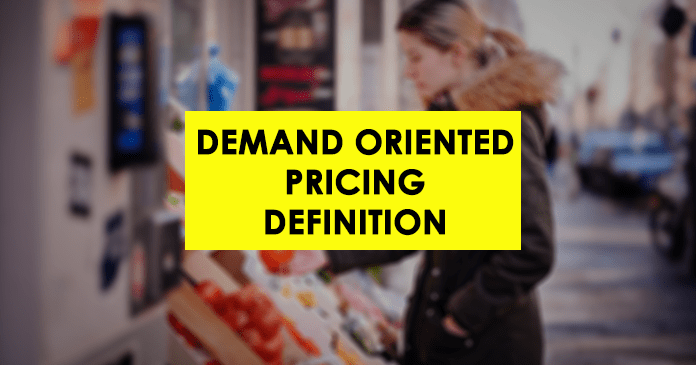Demand Oriented Pricing Definition is a pricing strategy in which the seller tries to set the price at a level that the targeted customers are willing to pay.
In other words, demand-oriented pricing is a pricing approach in which a company changes its price in response to demand changes. This method works well with a variety of cyclical or seasonal items.
This concept is used across numerous areas, including retail and transportation.
Companies must first identify the customer’s willingness to pay for any item or service. When demand is high, a high price is charged; when demand is low, a low price is charged. During peak hours, a high charge is maintained for service.
Let’s look at some examples to clarify this.

Examples: Demand Oriented Pricing Definition
- The most basic example is a local market. The greatest choices are available when the morning market starts, but they are at the highest costs of the day. As the market closes in the evening, sellers will normally experience a fall in pricing as they want to prevent having a product remain unsold.
- During the holiday season and the normal season, hotels may charge various rates.
- Airlines in the airline industry provide low ticket rates during peak seasons and reduced prices during off-peak seasons.
Demand Oriented Pricing Factors
- Demand patterns.
During peak season, sellers charge a higher price, while during the off-season, they charge a cheaper price. - Conditions of market supply.
Supply conditions must be taken into consideration by companies. - Price elasticity of demand.
When demand is elastic, charging high prices will simply push customers away and cause sales to fall. When demand is inelastic, decreasing prices will result in less demand. - Consumer preferences.
Firms may use pricing discrimination if they can correctly determine customers’ needs. - Product quality.
This will have an effect on people’s willingness to buy.
Methods of Demand-Based Pricing
1. Price Skimming
Price skimming means identifying the highest price of a product that customers wish to buy and gradually lowering it.
2. Value-Based Pricing
Value-based pricing means the process of choosing a price for a product that customers believe is worth it.
3. Penetration Pricing
The process of attracting new customers to a product is known as penetration pricing. It lowers the price after first lowering its worth. Its aim is to expand consumer awareness of the product’s value in relation to rivals.
4. Odd-even pricing
Pricing that usually ends in 199 is seen by the consumer to be less expensive than 200. These 199 prices have a bigger psychological influence on cost-effectiveness.
5. Yield Management
Yield management is a method in which a company selling fixed stock resources over a short time period tries to price its product to meet how demand levels change over that time period.
6. Price bundling
Offer a product in addition to the main item at a discounted price.
Continue Reading:
Determinants of Price Elasticity of Supply
Difference between Price and Non-Price Competition
Don’t forget to share this post!


